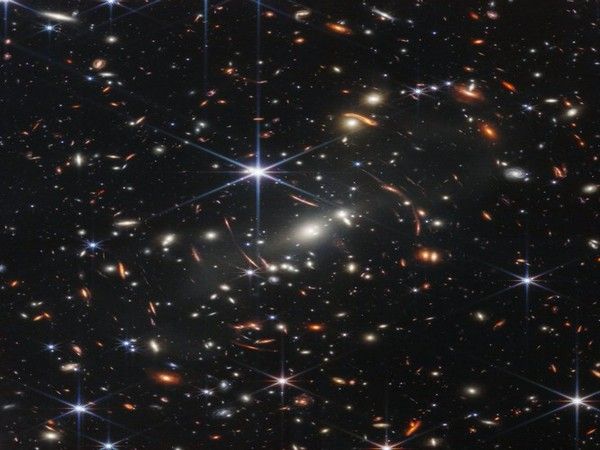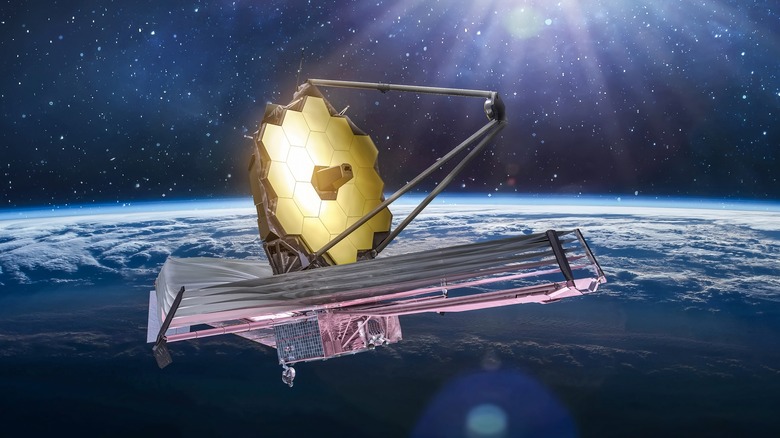President Joe Biden unveiled the first image from NASA’s $10 billion James Webb Space Telescope on Monday night at a press briefing at the White House.

The initial picture reveals thousands of galaxies, including the faintest objects ever detected, that have emerged for the first time in Webb’s vision. This is the deepest view of the cosmos ever captured.
Thousands of galaxies – including the faintest objects ever observed in the infrared – have appeared in Webb’s view for the first time. This slice of the vast universe covers a patch of sky approximately the size of a grain of sand held at arm’s length by someone on the ground.

“Today is a historic day” said President Biden. “The first image from the Webb Space Telescope represents a historic moment for science and technology,” he said. “For astronomy and space exploration.”
“And for America and all humanity,” he added.
NASA authorities said that further Webb Telescope photos would be published on Tuesday morning.
The photographs are the first wave of full-color scientific images captured by the telescope, depicting the furthest in time and space ever seen by humans.
The publication of the photograph signifies the commencement of Webb’s general scientific activities.

What is the purpose of the James Webb Space Telescope?Webb, an international collaboration between European and Canadian space agencies that had been in the works since the early 1990s, was launched from French Guiana in December.
The telescope just concluded its months-long process of preparation for scientific operations.
Three floors tall and the size of a tennis court, the Webb is the biggest telescope ever launched into space. It is also 100 times more powerful than the 32-year-old Hubble Space Telescope, which is famous but aging.
Backtracking across time and spaceDue to the length of time it takes for light from other galaxies to reach Earth, telescopes may not only observe distant objects but can also gaze back in time. This enables the Webb telescope, using infrared wavelengths, to see the formation of the earliest stars and galaxies approximately 13 billion years ago, just after the Big Bang.
According to NASA, Webb will investigate every era of cosmic history, from the solar system to the farthest distant galaxies detectable in the early cosmos and everything in between.
“Webb can see backwards in time to just after the Big Bang by looking for galaxies that are so far away that the light has taken many billions of years to get from those galaxies to our telescopes,” said Jonathan Gardner, Webb’s deputy project scientist said in a recent media briefing.

To examine the universe, Webb employs a huge, 21-foot main mirror comprised of hexagonal tiles. Its primary capacity is infrared observation, allowing it to peek past barriers like dust clouds to observe the earliest stages of star formation. Even farther, scientists want to observe the atmospheric compositions of potential distant worlds.
Thomas Zurbuchen, NASA’s science mission chief said, with the new telescope, the cosmos is “giving up secrets that had been there for many, many decades, centuries, millennia.”
“It’s not an image. It’s a new world view that you’re going to see,” he said during a recent media briefing.
Zurbuchen said when he saw the images he got emotional and so did his colleagues: “It’s really hard to not look at the universe in new light and not just have a moment that is deeply personal.”
An international committee comprised of members from NASA, the European Space Agency, the Canadian Space Agency, and the Space Telescope Science Institute picked the photographs.
Source: https://news.binodon24live.com








